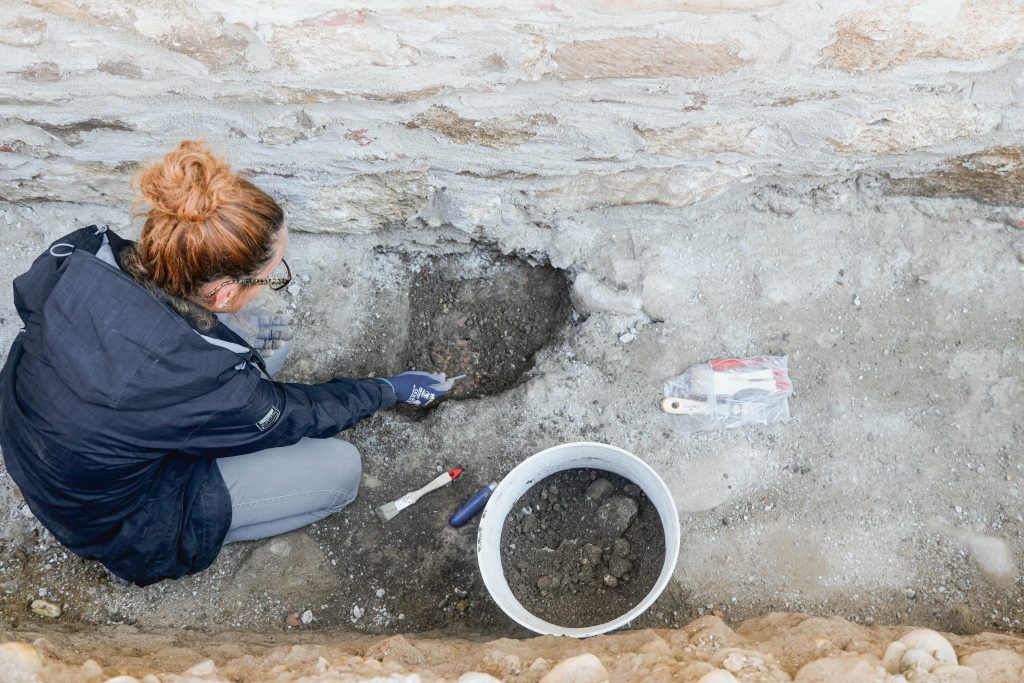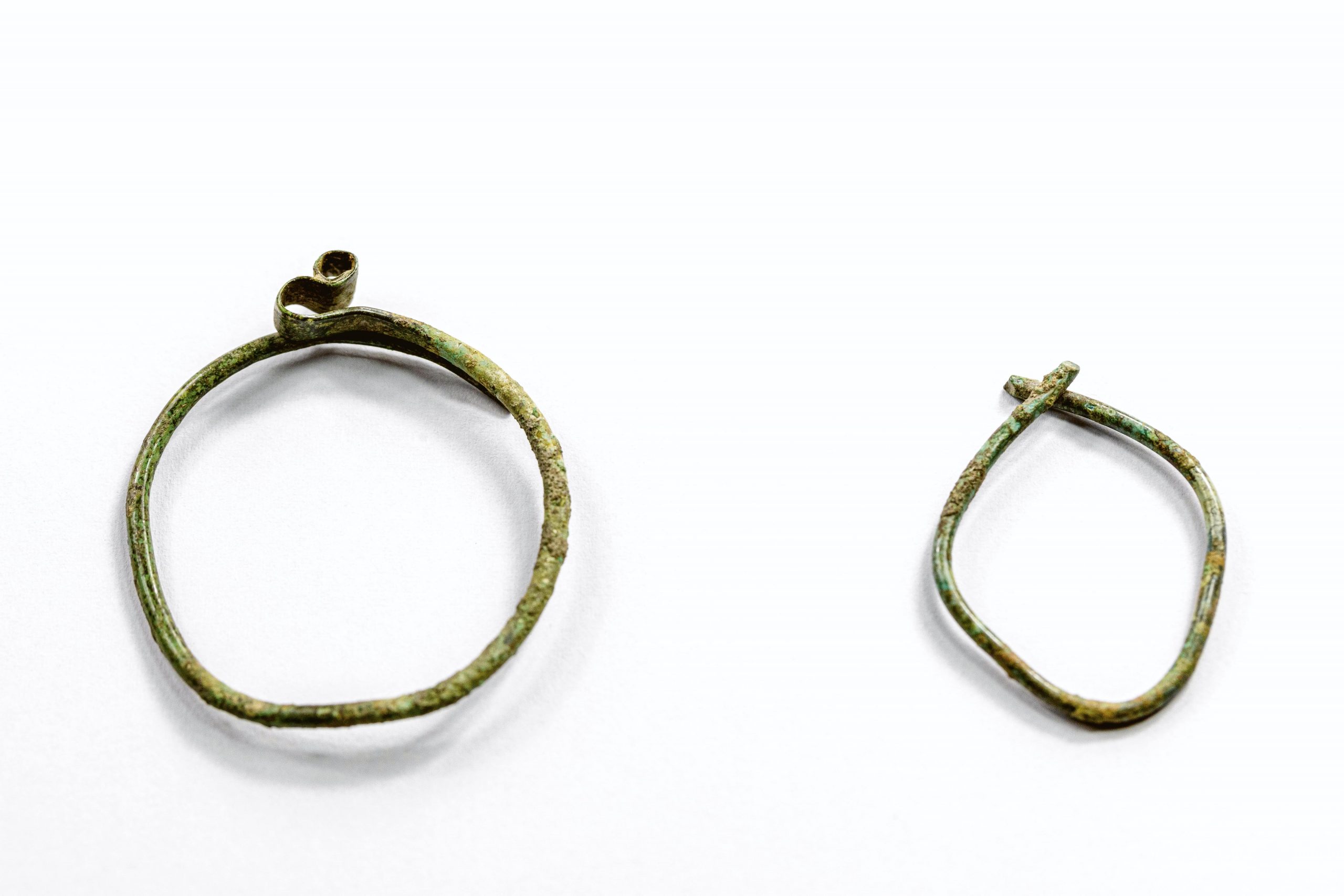New Archeological Findings in Ludbreg, Could be a Part of Bjelobrdo Culture
November 19, 2020 – Mayor Dubravko Bilić says that the new archeological findings in Ludbreg are proof that it has always been a desirable place to live.
As Lokalni.hr reports, the project "Improvement of continental tourism through tourist valorization of the historical and cultural heritage of the City of Ludbreg", worth 18 million kuna, gives increasingly visible results. The promenade and Zanatski trg (The Craft Square) have been arranged, and the Hotel Crnković has been renovated.
"We have always known that Ludbreg has the potential for tourism development. Through this project, we got the opportunity to present to the general public what the people of Ludbreg already know, and that is that people have lived here since time immemorial,“ said Mayor of Ludbreg Dubravko Bilić.
Part of the project is the arrangement of the cemetery of the Parish Church of the Holy Trinity, where interesting findings were made during drainage and archaeological supervision.
Late imperial period
"The works started on the west side of the cemetery, and at a depth of 1.20 meters, an irregular stone wall connected with plaster was found. Given that the excavation did not expand and that we do not have all the data, we do not know what exactly it is about. In 2009, the Croatian Restoration Institute carried out sounding research on the inside of the cemetery, and on that occasion, walls were found on the west side, one of which continues on the outside. It is an object of unknown purpose that can be dated to the late imperial period. Back in 1973, when the Archaeological Museum in Zagreb conducted soundings in Ludbreg, they found a silver earring, made of bent wire and bent in the shape of the letter S, which can be dated to the 10th and beginning of the 11th century. It was assumed that the earring came from the cemetery next to the church, which was located on the site of today's church," explains a young archaeologist Jelena Koprek from the Center for Culture and Information in Ludbreg.

The City of Ludbreg
She adds that guided by this assumption, they started digging a drainage trench on the north side of the cemetery. The project is co-financed by the European Regional Development Fund through the Operational Program Competitiveness and Cohesion.
Seven graves were found at a depth of 1.50 meters. All the deceased were laid on their backs and oriented in a west-east direction with their heads to the west.
"We found iron nails next to the head of the deceased in some graves, so it is to be assumed that the deceased were buried in wooden coffins that rotted over time. In three graves, along with the deceased, findings that place them in the 10th and early 11th centuries were found. The findings with which we dated these graves are earrings, ie links made of bronze wire with a bent end in the shape of the letter S, which was also found in 1973. The findings can be attributed to the Bjelobrdo cultural complex, but only after further research, it will be possible to confirm it accurately," says Koprek.

On the left: earring made of bronze wire with a bent end in the shape of the letter S; on the right: plain earring with endings crossing one over the other / The City of Ludbreg
Archeological park to be opened soon
Mayor Bilić notes that it is important for the City of Ludbreg to enable citizens to start engaging in tourism, either as an additional job or profession, through projects they are implementing, and thus to see their future there.
"The findings in the very center of the city are not new, but thanks to this project we will finally be able to show them to others. The new findings are just proof that we have always been a desirable place to live," concludes Mayor Bilić.
The town of Podravina, known for its wonders and legends, will soon open the doors of the archeological park.
Bjelobrdo culture
According to Hrvatska enciklopedija, Bjelobrdo culture, or Bijelo Brdo (White Hill) culture is predominantly Slavic culture of the early Middle Ages (10th – 12th centuries), widespread in the Pannonian plain. It is named after the cemetery in Bijelo Brdo near Osijek. In Croatian, the most important sites are located in Vukovar, Josipovo, Kloštar Podravski. Row cemeteries without grave architecture are what characterizes Bjelobrdo culture, and among the grave goods, jewelry (simple rings, rings with an S-shaped end, grape-shaped earrings, necklaces, rings), iron tools and weapons, and ceramics stand out.
To read more news from Croatia, follow TCN's dedicated page.
Split Archeology Museum Marks Its 200th Anniversary
August 23, 2020 - The Archaeological Museum in Split is the oldest in Croatia and Southeastern Europe. Established in 1820, the museum initially didn't have its building, but the items were placed in rented warehouses. Dr. Karlo Lanza was appointed the first director, but the Golden Age of the Archaeological Museum and Archeology, in general, began in 1884 with the appointment of Don Frane Bulić, the father of Croatian archeology.
Today the Museum has tens of thousands of different archaeological objects, sorted by historical periods and localities. The Archaeological Museum has a significant library and archive fund, and since 1878 it has been the publisher of the oldest archaeological journal "Journal of Dalmatian Archeology and History".
In addition to collecting, processing and presenting archaeological material and monuments, the Museum conducts systematic archaeological research at the sites in Salona and Issa, and has a handy collection at the site of Salona, with a building in Solin - Tusculum, a collection in Issa in the Gospina Batarija building and the eponymous site in the town of Vis.
Namely, Slobodna Dalmacija reports that ceremony marking the 200th anniversary of the museum was held yesterday, on Marmontova Street, where an exhibition of photographs "Salona", by Vicko Vidan, was set up. After that, a concert by Terezija Kusanović and friends and the Papadopoulo quartet was held in the museum.
The director of the institution, Ante Jurčević, announced: "Two hundred years since the founding of the Archaeological Museum in Split is a significant anniversary for Croatian archeology, which will be solemnly marked through numerous events in the coming months. The commemoration ceremony begins on the day of its founding, with a concert in the museum garden and an exhibition of photographs in Marmontova Street, while the culmination of the celebration is planned for December 15, with the opening of an exhibition dedicated to the archaeological research of the Hellenistic and ancient city of Issa and the ceremonial academy at the Croatian National Theater in Split".
For the latest travel info, bookmark our main travel info article, which is updated daily.
Read the Croatian Travel Update in your language - now available in 24 languages
Join the Total Croatia Travel INFO Viber community.
Archeologists Make Sweet Discovery at Underwater Site Near Pag
June 1, 2018 — Scientists from Zadar’s Archaeological Museum found luxury ceramics designed to make sugar near Pag, confirming life has always been sweet on one of Croatia's breezier islands.
Top 20 Archaeological Destinations in Croatia Named in New Travel Guide
“Top 20 Archaeological Destinations in Croatia" is the first publication resulting from the cooperation of the sector of tourism and archaeology.


